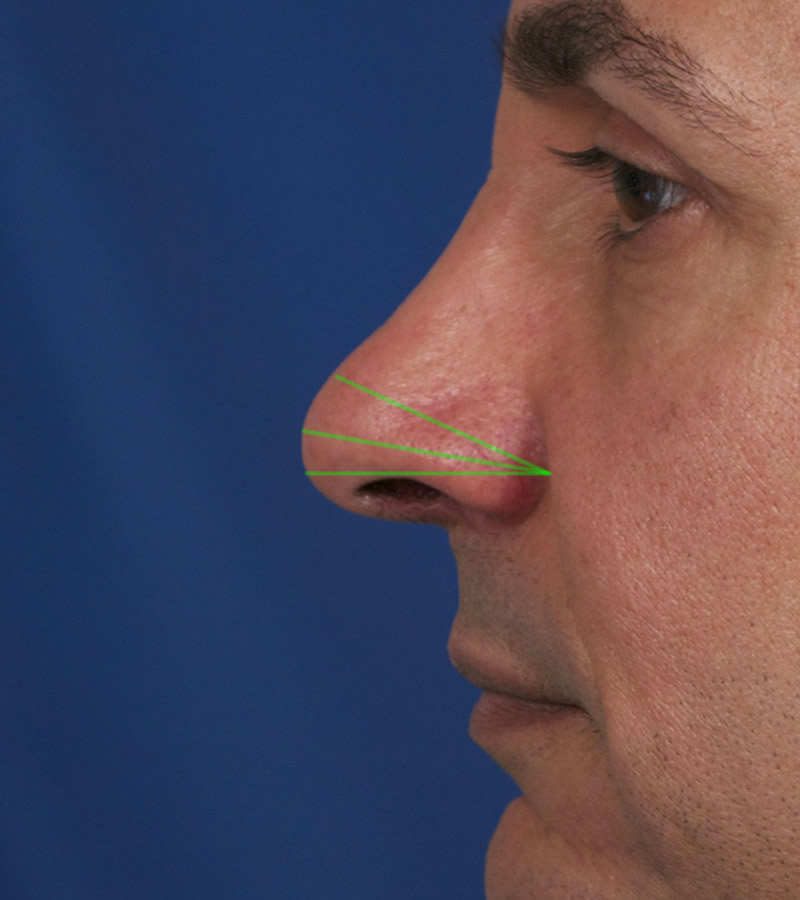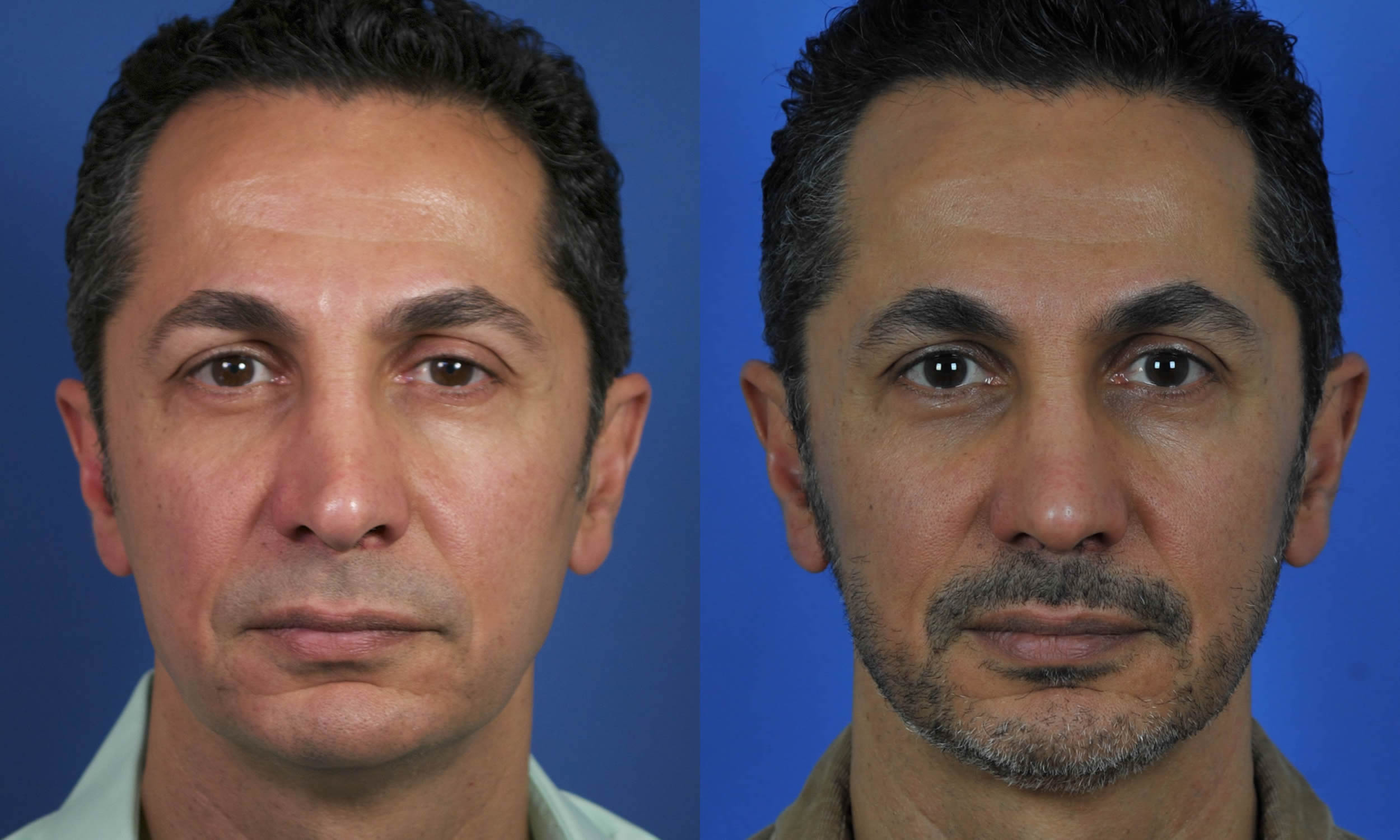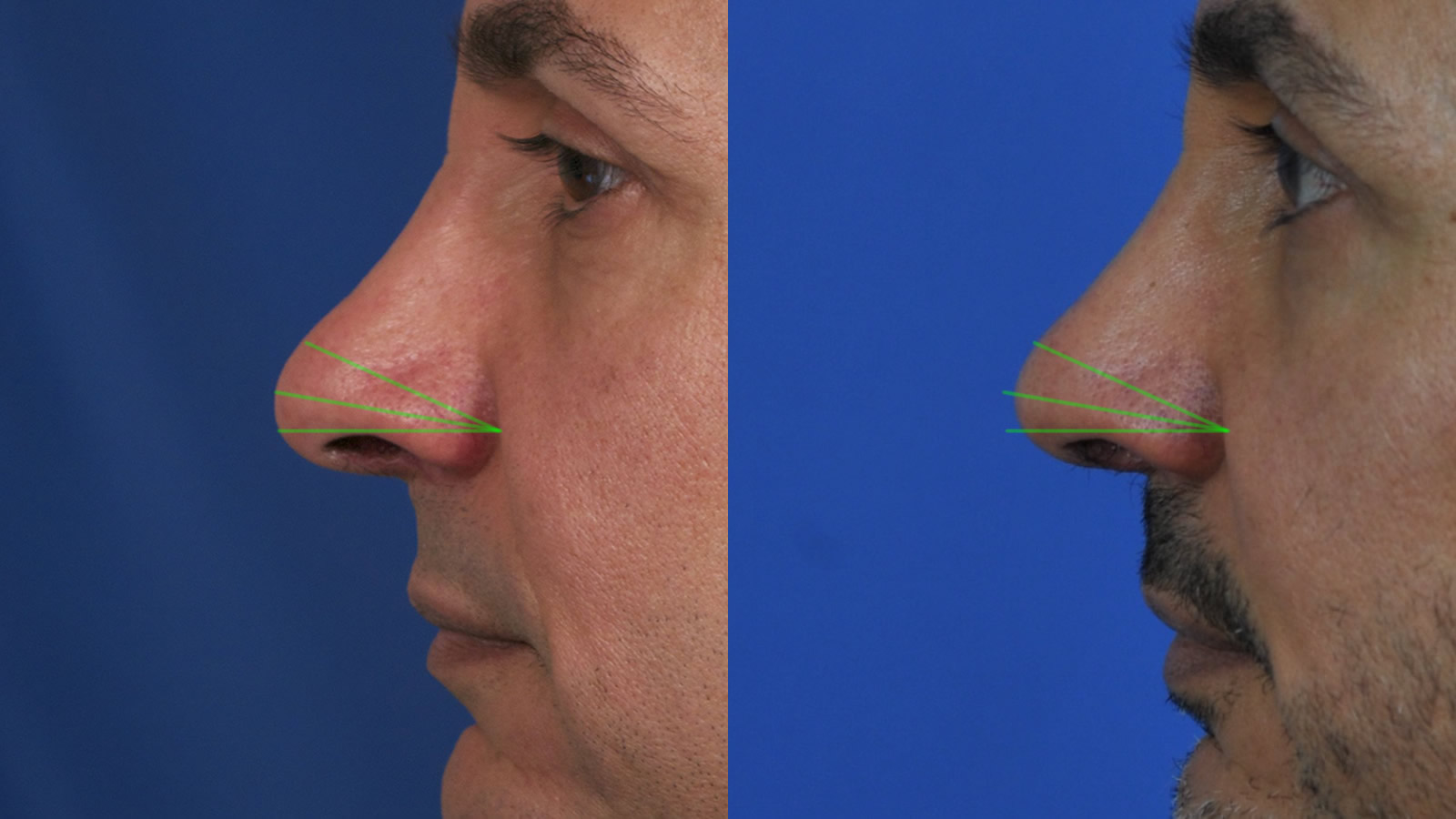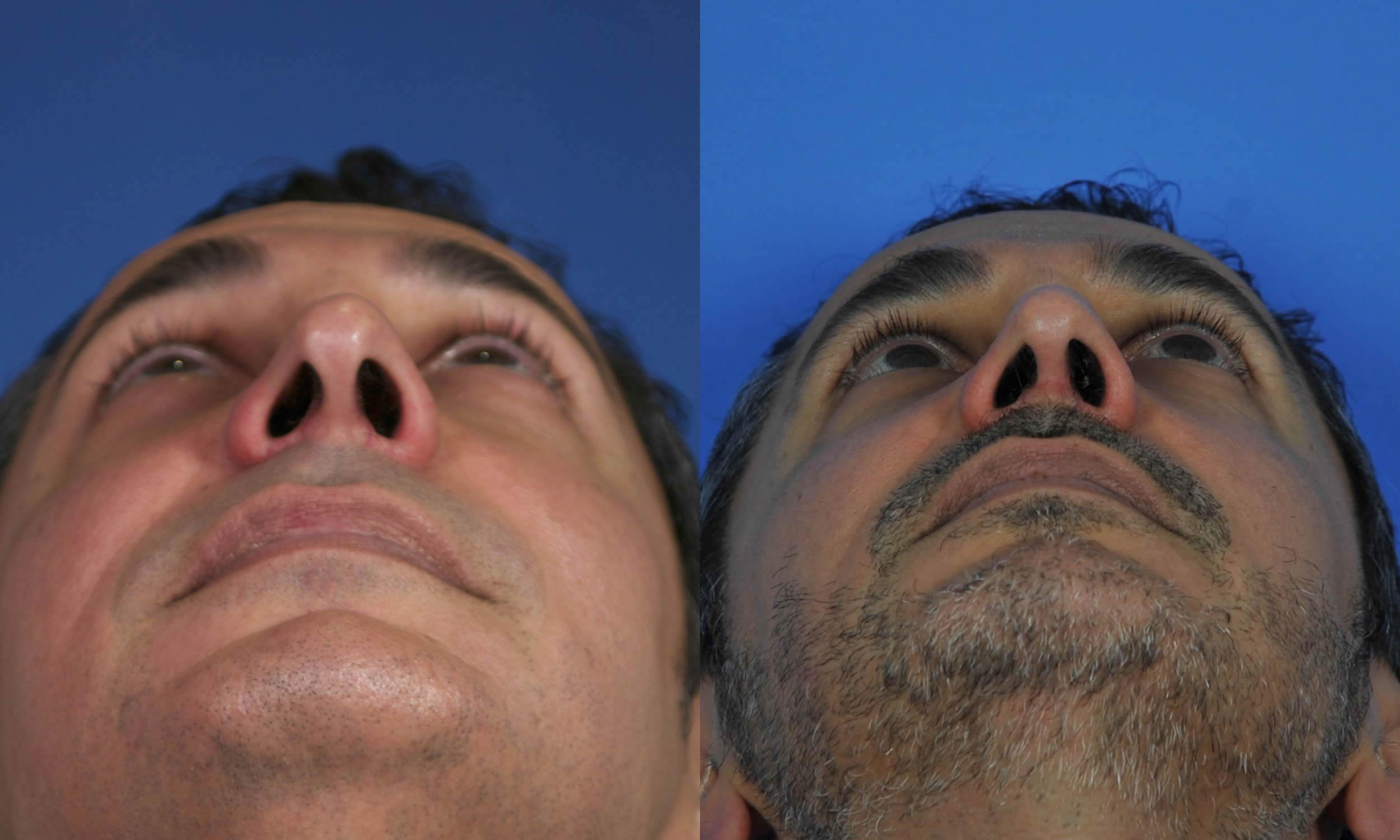 This is a great case example of how revision rhinoplasty can help correct functional problems following previous, unsuccessful rhinoplasty surgery. This patient was referred to my office by a past rhinoplasty patient of mine. He had undergone nose surgery that was performed by a plastic surgeon in the Orange County area. Unfortunately, in the process of reshaping his nasal tip, something was done to the cartilage support resulting in collapse of his right side.
This is a great case example of how revision rhinoplasty can help correct functional problems following previous, unsuccessful rhinoplasty surgery. This patient was referred to my office by a past rhinoplasty patient of mine. He had undergone nose surgery that was performed by a plastic surgeon in the Orange County area. Unfortunately, in the process of reshaping his nasal tip, something was done to the cartilage support resulting in collapse of his right side.
Cosmetically, this created an abnormal shadow along the right side of his tip, which was more obvious since there was such asymmetry between the right and left sides. In addition to the cosmetic concerns, the collapse contributed to trouble breathing through that side of his nose. This is because there was limited support over the nostril to prevent collapse as he breathed inward through the nose. This is a medical condition referred to by plastic surgeons as vestibular stenosis or external nasal valve stenosis. This term, stenosis, implies there is some sort of narrowing. In this case, the nasal airway was, indeed, narrowed just inside of the nostril opening. Unfortunately, when this circumstance arises, there is very little that medication will do to help improve the subjective symptoms of obstructed airflow. The only real solution is reconstructive surgery to help rebuild the deficient area of the nose.
An Over Projected Nasal Tip
 In addition to the issues seen on his frontal view, this patient also had what is called an over-projected nasal tip – over overly projected nasal tip. This means that the tip of his nose stuck out too far from the plane of his face. This is shown more visually in the adjacent photo diagram by the green lines that indicate what we are looking at when we judge the projection of a nasal tip. In this particular instance, the projection of the nasal tip is excessive. So we also discussed making adjustments to the position of the nasal tip cartilage in the process of restoring proper tip support.
In addition to the issues seen on his frontal view, this patient also had what is called an over-projected nasal tip – over overly projected nasal tip. This means that the tip of his nose stuck out too far from the plane of his face. This is shown more visually in the adjacent photo diagram by the green lines that indicate what we are looking at when we judge the projection of a nasal tip. In this particular instance, the projection of the nasal tip is excessive. So we also discussed making adjustments to the position of the nasal tip cartilage in the process of restoring proper tip support.
Revision Open Rhinoplasty Surgery
 He ended up undergoing an open revision rhinoplasty – meaning I made an incision across the bottom of his nose and reflected the skin upward to expose the cartilage framework. Upon opening the nose during surgery, it was confirmed that the right side of his tip was notably collapsed. This is shown in the adjacent intraoperative photo. As the arrow indicates, he had a marked collapse in the cartilage contour on this side of the tip. You can even see how this side of his nasal tip shadows more so even with the skin reflected back.
He ended up undergoing an open revision rhinoplasty – meaning I made an incision across the bottom of his nose and reflected the skin upward to expose the cartilage framework. Upon opening the nose during surgery, it was confirmed that the right side of his tip was notably collapsed. This is shown in the adjacent intraoperative photo. As the arrow indicates, he had a marked collapse in the cartilage contour on this side of the tip. You can even see how this side of his nasal tip shadows more so even with the skin reflected back.
The main focus of the surgery was to help rebuild the depressed segment of cartilage. This was accomplished with use of cartilage grafting technique. Fortunately, his prior surgeon did not remove much of his septal cartilage. Therefore, there was plenty of septal cartilage available for harvesting and use. Had the septal cartilage been depleted from his prior surgery, I would have had to look elsewhere for sufficient cartilage to do the grafting.
In the process of repairing the collapsed external nasal valve, I also was able to reposition his nasal tip. This was done by bringing the entire tip complex closer to the face. One of the main considerations in being able to accomplish this successfully was the thickness of his skin. He happened to have medium thickness skin, which was more amenable to ‘shrink wrapping’ down to the new, smaller sized tip. If he had thicker nasal skin, this shrinking effect would be much less likely – making it much more challenging to reduce the projection of his nasal tip.
Before & After Revision Rhinoplasty
Here are this patient’s revision rhinoplasty results showing his outcome greater than 1 year following his surgery. As you can now see, his nasal tip is much more symmetrical than it was prior to surgery. This translates into a much more stable nasal airway for him – meaning, he can now breathe much better.
On his oblique and profile views, you can appreciate how his nasal tip projection was decreased. In other words, his nasal tip was brought closer to the face to create more harmony overall. In the diagrammed profile view shown below, you can even see how much his tip was de-projected. Although this amount translates into a matter of millimeters – rhinoplasty is a game of millimeters. And, as exemplified here in this case, that is all that was needed to make his nasal tip projection appear more appropriate and balanced for his face.
Most importantly, he still looks quite natural following this type of complex revision rhinoplasty procedure.





